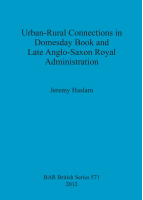Description
BOOK DESCRIPTIONOne of the most tenacious and long-running controversies regarding the origin and development of the late Anglo-Saxon town has been the nature and function of 'heterogeneous tenure', one of the defining characteristics of the Domesday borough. This refers to the basic division of the larger boroughs as described in Domesday Book into the customary burgesses or tenements which owed dues and obligations to the king alone, and the non-customary burgesses or tenements which were appurtenant to the various manors of tenants-in-chief of the shire (and sometimes neighbouring shires) to whom they paid rent and owed other dues and services. This present study outlines a preliminary model for the development of these rural-urban connections, based primarily on a reassessment of the evidence in Domesday Book and in earlier charters, where available, and the spatial relationships of the manors enumerated in it to their central boroughs, their neighbours, and to shire and other early boundaries, as well as to other features of the physical and historic landscape. This model is developed and tested by the analysis of evidence from several adjoining areas in central England - 1) Wiltshire (chapters 2 and 3); 2) Hampshire (chapter 4); 3) Warwickshire and south Staffordshire (chapter 5); 4) Gloucestershire (including the former Winchcombeshire) (chapter 6); 5) Worcestershire (chapter 7); and 6) Oxfordshire, Berkshire and Buckinghamshire (chapters 10-12).











